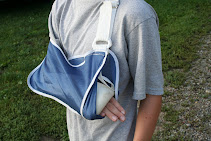Reasonable foreseeability of harm may be considered as a vital factor in determining liability in a personal injury case such as animal attacks.
Take the case posted on August 29, 2008, entitled “Dog Bite: Absentee Owner Can Be Liable If They Allow Dog on the Premises”. Here, a property owner was held liable for the harm done by a dog owned by one of his contracted workers after the dogs attacked a fellow worker. Salinas v Martin (August 28, 2008) First District, Division 1, Case No. A119733 prohibits.
Based on the article, a property owner had contracted a group of workers to do renovation job on his house. Several men worked on the project as sub-contractors and gardeners. All of them had access to the premises. The gardeners, whom the owner hired to do the landscape, had two dogs, a pit bull and a pit bull mix.
The homeowner knew about the dogs and given the gardeners the permission to allow the dogs on the premises. The dogs were free to run around in the fenced-in back yard.
One weekend, as one worker went to the job site to retrieve some scaffolding, he was attacked and bitten by the pit bull.
The trial court granted summary judgment to the homeowner, holding him to the same standard as a residential landlord who must have actual knowledge of a dog’s dangerous propensity before he or she can be held liable.
The Court of Appeal reversed the verdict and held the property owner to the usual standard according to the doctrine of reasonable foreseeability of harm. In this case, the Court of Appeal held that it was foreseeable that the pit bull would attack another worker and thus the homeowner could be held liable for the injuries sustained by the animal attack victim.
In animal or dog attacks, foresee ability of harm may be determined by these factors:
• The dog’s behavior prior to the attack
• The history of attack incidents, if there are any
To pursue claims in an animal attack, a victim must seek the assistance of a lawyer with experience in handling cases of this nature.
Take the case posted on August 29, 2008, entitled “Dog Bite: Absentee Owner Can Be Liable If They Allow Dog on the Premises”. Here, a property owner was held liable for the harm done by a dog owned by one of his contracted workers after the dogs attacked a fellow worker. Salinas v Martin (August 28, 2008) First District, Division 1, Case No. A119733 prohibits.
Based on the article, a property owner had contracted a group of workers to do renovation job on his house. Several men worked on the project as sub-contractors and gardeners. All of them had access to the premises. The gardeners, whom the owner hired to do the landscape, had two dogs, a pit bull and a pit bull mix.
The homeowner knew about the dogs and given the gardeners the permission to allow the dogs on the premises. The dogs were free to run around in the fenced-in back yard.
One weekend, as one worker went to the job site to retrieve some scaffolding, he was attacked and bitten by the pit bull.
The trial court granted summary judgment to the homeowner, holding him to the same standard as a residential landlord who must have actual knowledge of a dog’s dangerous propensity before he or she can be held liable.
The Court of Appeal reversed the verdict and held the property owner to the usual standard according to the doctrine of reasonable foreseeability of harm. In this case, the Court of Appeal held that it was foreseeable that the pit bull would attack another worker and thus the homeowner could be held liable for the injuries sustained by the animal attack victim.
In animal or dog attacks, foresee ability of harm may be determined by these factors:
• The dog’s behavior prior to the attack
• The history of attack incidents, if there are any
To pursue claims in an animal attack, a victim must seek the assistance of a lawyer with experience in handling cases of this nature.



